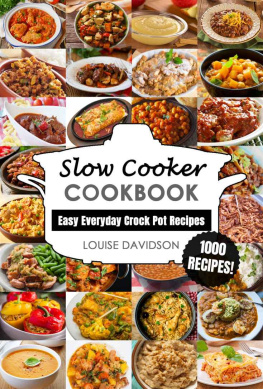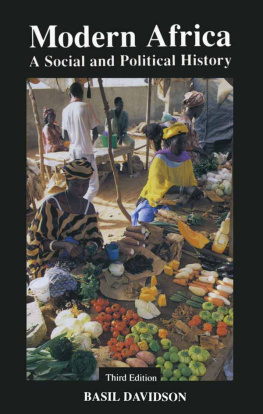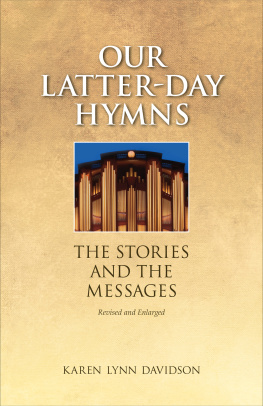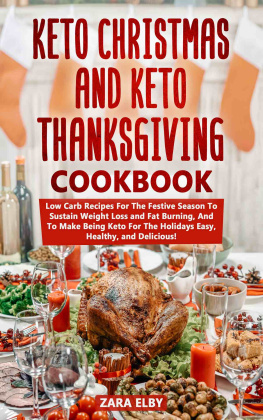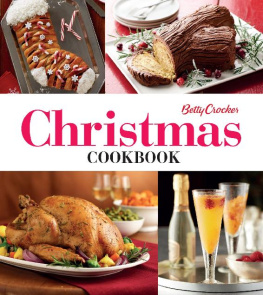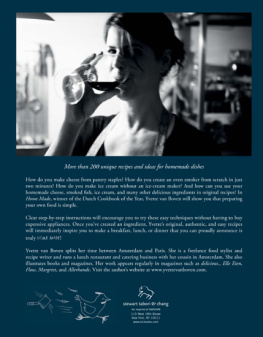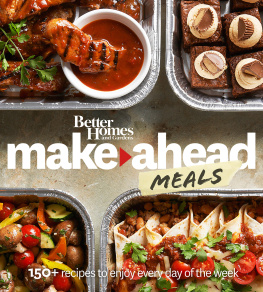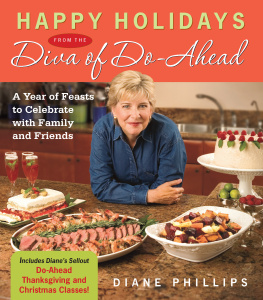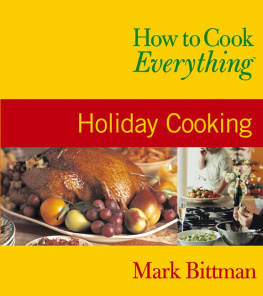Festive Recipes to Make in Advance from Appetizers to Desserts for Stress-Free Holidays
All rights reserved 2022 by Louise Davidson and The Cookbook Publisher. No part of this publication or the information in it may be quoted from or reproduced in any form by means such as printing, scanning, photocopying, or otherwise without prior written permission of the copyright holder.
To thank you for downloading my book, for a limited time, you can get these two FREE COOKBOOKS from the Cookbook Publisher.
COOKING MAKE-AHEAD MEALS
The holidays are just right around the corner, and we all want to impress our guests with rich and decadent home-cooked meals every year.
We must admit that we all live crazy-busy lives. More often than not, we dont have time to cook at home. Instead, we find ourselves buying something to take away or eating something quick.
The holidays remind us that we must cook home-prepared meals for the whole family because the memories of these rare moments last forever. Theres a saying that food keeps the whole family around the table, and I find this to be so true because every day, we wonder what will bring us closer to our friends and family. A home-cooked meal is the answer.
This book is dedicated to all of you who live hectic lives but crave the holiday spirit and want to prepare home-cooked meals for the whole family. In this book, you will find ideas that will amaze everyone and bring so many oohs and ahs to the table. This book will teach you how to prepare something ahead of time (usually up to 1 month) and freeze it until the big day arrives. This way, you will have less time to spend in the kitchen, but will still have prepared a series of delicious meals that are perfect for everyone.
Inside this cookbook, you will discover 75 holiday recipes that are perfect for making ahead of time. Most of them are freezer-friendly meals; some can be made one week ahead of time and kept in the fridge until serving day. The whole concept of making recipes ahead of time is that you always have a delicious meal within a moments notice.
You will find recipes for everyones taste, and I am sure that even the pickiest eaters will enjoy the meals you prepare ahead of time. From appetizers to soups to desserts, you will find main dishes divided into seafood and fish, poultry and pork, and beef. This way of cooking is not only convenient for the holidays, but you can also use some of these recipes and practice them whenever you need to do meal prep. You will have a home-cooked meal no matter how busy your day or week might be.
Whatever recipe you choose from this book, I am sure you will enjoy it as much as we do in our homes. You dont want to spend most of your time cooking up a storm the same day as a big party.
This book will help you create the best dishes for the holiday season, and you will be surprised how many recipes can be prepared ahead of time. Some can be fully cooked and frozen until the big day, and some can be partially made and stored in the fridge for the best results.
This book will also help you keep your fridge and freezer stocked with delicious meals you can put on the table in a pinch. I am sure that everyone will be surprised by how youve managed to cook so many meals in such a short period of time. The secret is making the meals ahead and freezing them until its time to serve them.
With our hectic schedules, it can be a bit hard to give time to prepare meals, even during the holidays. That is where make-ahead meals and meal planning comes in. With meal prepping, we must plan ahead, but there is truly no one method of getting it done. You can personalize your method as you go along, based on your food preferences, cooking ability, personal goals, and schedule.
Freezer and Refrigerator Guidelines
Its important to remember that when you make meals ahead of time, there are still some food storage guidelines, particularly for freezers and refrigerators you need to keep in mind. Keeping food from going bad isn't the most glamorous part of making meals ahead, but it's an important consideration if we want to prevent food-borne illnesses.
Here are some considerations:
Food that has been chilled or cooked should not be kept at room temperature for longer than two hours at any time because bacteria grow fast in this environment. Temperatures between 40F and 90F are considered the danger zone for foods that are in this category. As soon as the temperature reaches 90F or higher, the general rule drops to one hour. Cold foods should be kept cold and hot foods, hot.
All your uncooked meat should be placed at the bottom of the refrigerator, while your cooked foods should be placed at the top. By doing this, you prevent raw meat juices and blood from dripping into your prepared food and causing cross-contamination. Before storing your foods, ensure they are wrapped or covered properly.
Maintain a refrigerator temperature of no more than 40F and a freezer temperature of at least 0F (the freezing point).
If you plan to store food in the freezer, attach labels to the containers. A permanent marker and a strip of masking tape is an easy and mess-free option. This helps you keep your freezer organized and youll be able to stand with the door open for a shorter time. Adding labels with dates whether thats a use by or cooked on date will make it easier to ensure that your prepared meals do not spoil because you forgot about them.
In the right conditions, the food stored in your fridge and freezer can last a long time, but it won't last indefinitely. In general, these foods should be used up within a few days, and no more than a week.
Reheating and Thawing Guidelines
The second set of guidelines we need to remember is how to properly thaw and reheat your food. It's not difficult; there are just a few things to know, but mastering them will make meal preparation a lot easier. So let's find out how to thaw and reheat frozen food properly.
How to Thaw and Reheat Frozen Food
You should never:
- Let your frozen food sit at room temperature to thaw. Don't forget the danger zone! This method will cause your food to reach a surface temperature of 40F before even the center starts to thaw. Your food can start to go bad once this happens.
- Refreeze thawed foods unless they were raw and have now been cooked completely.
In all cases:
- Make sure your frozen meals are thawed in the refrigerator ahead of time (usually 24 hours). Keeping your food below 40F is the best way to ensure its safety. Thawing is best accomplished using this method.
- Let the frozen items thaw under running water when you cant thaw in the refrigerator. When using this method:
- Keep the water at a temperature of 70F or lower.
- Ensure that your prepared meals do not exceed 40F until reheating.
- While thawing raw meat, poultry, and fish, the surface temperature should remain below 40F for at least four hours.



